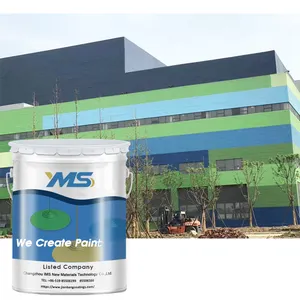
Reflective Road Lines Paint Titanium Dioxide Medium Chrome Yellow Thermo Road Paint Traffic Road Marking Paint



















Reflective paint, also known as retroreflective paint, is a specialized type of paint that contains tiny glass beads or prisms that reflect light back to its source. The unique property makes it highly visible and helpful in various applications, from road markings to safety gear.
One of the key features of heat reflective paint is its ability to enhance visibility especially in low-light conditions. When light hits the paint's surface, the glass beads or prisms act as mirrors, reflecting the light toward its source. Reflection makes objects painted with reflective paint stand out and easily visible, even from a distance. Whether it's a road sign, a bicycle helmet, or a safety vest, reflective paint ensures that the wearer or the object is easily seen, reducing the risk of accidents.
White reflective paint offers numerous benefits, particularly in terms of safety. For road markings, reflective paint is essential for guiding drivers and pedestrians, especially during nighttime or adverse weather conditions. The reflective properties of the paint help drivers stay in the correct lane, navigate curves, and identify potential hazards ahead. Additionally, reflective paint is often used on bicycles, motorcycles, and helmets to increase visibility and reduce the chances of collisions. In addition to safety, reflective paint for concrete also has aesthetic and decorative uses. It can create eye-catching design patterns on walls, floors, or clothing. In art, reflective paint adds a unique dimension, creating an interactive experience as the artwork changes with different lighting conditions. The versatility of reflective paint allows for endless creative possibilities.
Reflective paint, also known as retroreflective paint, is a specialized type of paint that contains glass beads or reflective materials. The unique characteristic of reflective paint for metal is that it reflects light to its source, making it highly visible even in low-light conditions. The applications of reflective paint are diverse and have significant benefits in various industries. One of the most common uses of reflective paint is road markings and signage. By applying reflective paint to road surfaces, lane markings, crosswalks, and traffic signs, visibility is greatly enhanced, especially during nighttime or adverse weather conditions. Reflective paint is also widely used in the construction industry. It improves site visibility when applied to construction equipment, vehicles, or temporary barriers. Workers and pedestrians can easily spot these reflective surfaces, making them aware of potential hazards and ensuring safety. Emergency services, such as police, fire, and ambulance departments, also utilize reflective paint. Emergency vehicles are often adorned with reflective paint to increase visibility and allow them to be easily identified even from a distance. It helps other drivers on the road to quickly react and make way for emergency vehicles, potentially saving lives. Reflective paint finds applications in recreational and outdoor activities. When choosing reflective paint, consider its intended application, durability, and visibility requirements. Look for quality to ensure the paint meets safety st,alsords alos check the surface of application of the reflective paint.